Travel or Garden Writing?
Collapsed on the couch after a hard day's gardening, I've been escaping into some travel reading. Intrepid old-lady cyclists, male Amazon rafters, and so on. Wow! Much more entertaining than garden books, particularly after five long hours weeding...
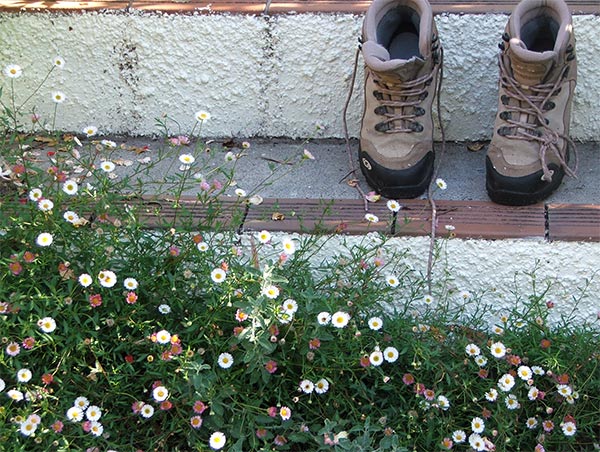
Walking Boots - or Gardening Boots?
Compared to travel writing, garden writing has a long row to hoe. 'Making Perfect Compost' sounds like hard work, and books offering 'the rollicking adventures of a garden designer in Provence' have an awful lot of spade work to do - in my slightly anti-garden-designer opinion!
My Analysis of Travel Writing...
Analysis of travel writing, after five long hours weeding, has left me with the following conclusions. The perfect travel book has snippets of local history, plus chatty, vague descriptions of local scenery. It is packed with stories of mishaps and sillinesses, and fully reported conversations with odd people met on the way. The odder the better!
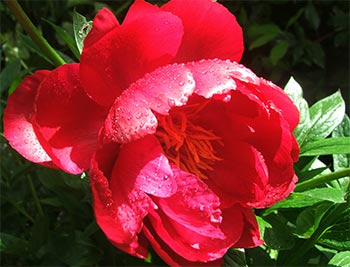
Heritage Peony
So let's look at these essential elements in the garden writing context. Firstly, those snippets of history which create a serious, well-informed mood.
Local History
Local garden history is nice - lots of gardening books give it a go. It can be humble - great grandmother planted the peonies which still flower each spring - or grand, like the painstaking restoration of Lord Forgotten's topiary gardens using the original sketches and plans. The history of a garden should be interesting to an outsider - shouldn't it?
Oops. I'm not so sure about the impact of humble historical ramblings. For example, the famous Moosey Wattle Woods started life as - well - Wattle trees, under which the original Moosey sheep safely grazed, as well as enriching the sandy soil beneath.
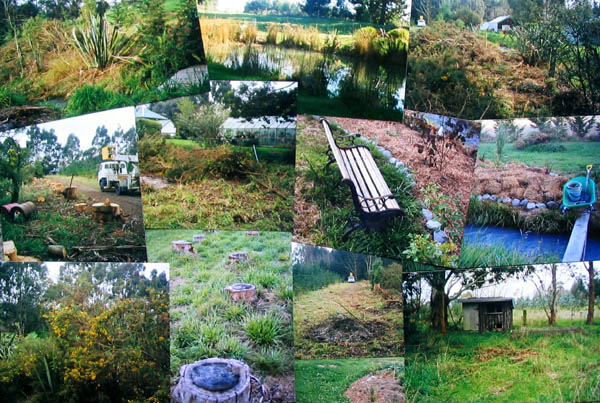
Moosey Garden History
But I'm prepared to give it a go : Understanding nothing, the Head Gardener's first planting plan had drifts of Kalmias as the main shrub focus The twelve year transformation of the Wattle Woods then saw much sweating and toiling and digging and weeding and raking, as the Kalmias faded into a distant memory. The path seriously changed direction in 1997 and again in 2004, native bumble bees made a huge nest in 1998's compost heaps, and the latest venture involves a small wriggling stream powered by a waterwheel. Interesting?
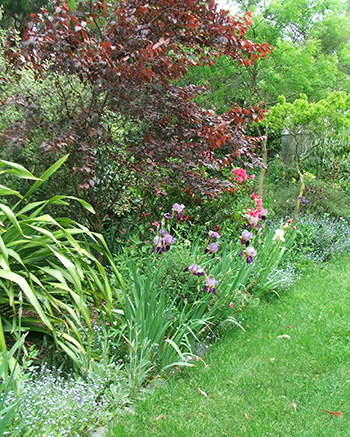
Irises in the Wattle Woods
Descriptions
Chatty descriptions of gardens are actually very hard to do well. Mention measurements or directions - 'The Jelly Bean border is eight meters long and faces the north-west' - and thousands of numerophobics will be frightened off. Over-use the adjective 'beautiful' when describing the roses and all retired teacher-readers will turn away, yawning. And plant lists, with details of location and anaylsis of visual combinations, can just become simply boring. Readers would much rather see a photograph and make their own minds up.
Sillinesses
Let's move on to the stories of mishaps and sillinesses. Unfortunately, the botanical sciences have taken the fun out of these. Gardeners will occasionally nurture something undesirable or noxious, and live to giggle about it later. But really! How irresponsible not to have checked - the plant encyclopaedia, the label details, the angle of the sun, the plant pedigree... It's much more fun reading about an intrepid traveller's mistakes - getting on the wrong bus, or wandering into a house of ill-repute thinking it was the post office... But no stories of falling off bicycles, please.
Conversations
Travel books rely heavily on meetings with odd people, who talk to the writer. In most gardens there's a definite lack of odd people to talk to. The Victorians had the right idea. Many large gardens had a resident hermit who lived and lurked in a rustic hovel, and who could provide some eccentric conversation.
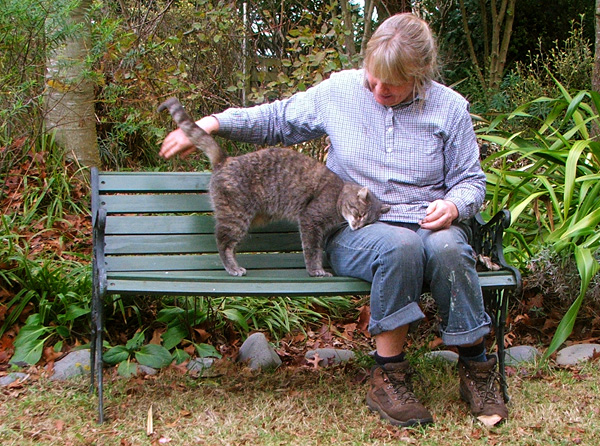
Head Gardener with Lilli the Cat
The average modern gardener conducts his or her conversations with a cat or a dog. But these conversations do not make for riveting reading, since they are rather one-way. Birds are even worse. They often remove themselves from range, so the gardener ends up shouting. This would result in the annoying overuse of bold type, and far too many exclamation marks!!!!!
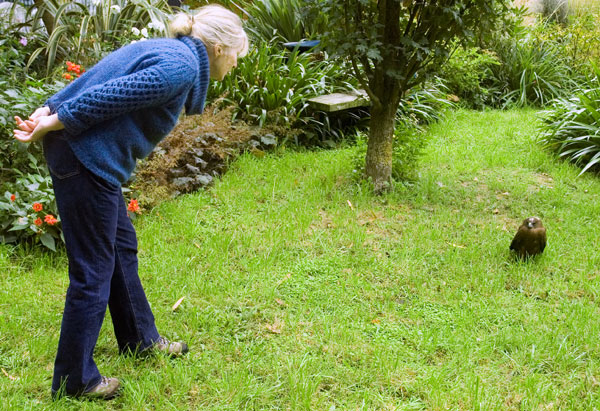
Head Gardener Meets Hawk
Mind you, good gardeners always chat with their favourite plants, encouraging them to grow well, asking them if they need anything, and so on. Alas - plants, like pets, do not normally answer back (some gardeners never seem to notice this). And conversations with paid under-gardeners don't really count.
My Conclusion...
Travel writers pass the time in a much more interesting way than garden writers. Cycling from London to Alexandria in three months - the same time it takes the Moosey Head Gardener to plan, dig, weed, and plant a new rose garden. Hmm... Where exactly have I hidden my bike pants?